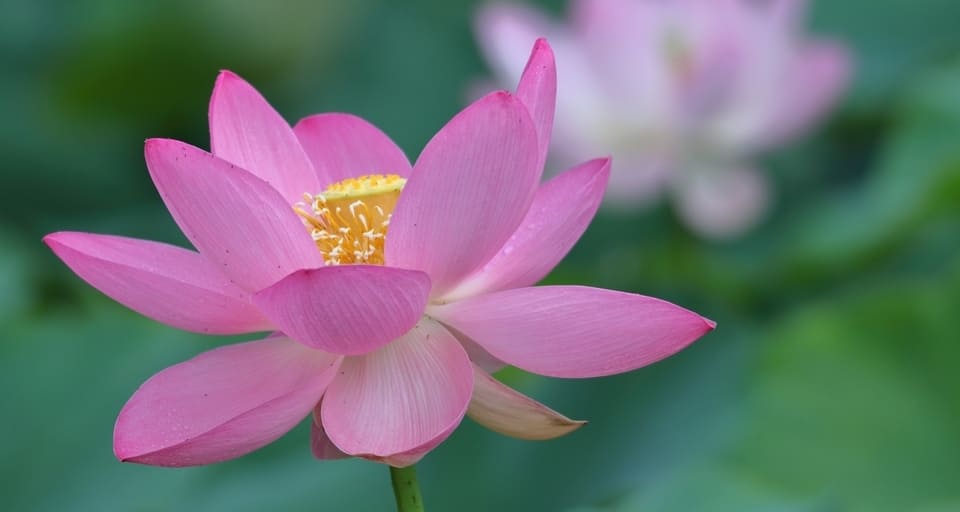In our quest to create a thriving and vibrant environment at home, few things can rival the elegance and beauty of a blooming lotus. The sight of these exquisite aquatic plants gracing your pond or container garden can be truly mesmerizing. However, achieving the perfect lotus bloom at home requires more than just a green thumb; it demands careful planning, knowledge, and attention to detail. In this comprehensive guide, we will take you through the steps to make lotus bloom at home and transform your outdoor space into a haven of natural beauty white lotus cast.
Understanding the Lotus: Nature’s Exquisite Beauty
Before we delve into the nitty-gritty of lotus cultivation, it’s crucial to understand this remarkable plant. The lotus, known scientifically as Nelumbo nucifera, is not only visually stunning but also steeped in cultural and spiritual significance in various parts of the world. With its radiant petals emerging from the mud, it symbolizes purity, enlightenment, and rebirth. To successfully cultivate lotus at home, we must appreciate its unique characteristics and requirements.
Selecting the Right Lotus Variety
There are two primary types of lotus plants: the hardy and the tropical. Each has its specific requirements and can thrive in different climates. The hardy lotus varieties are more cold-tolerant and suitable for temperate regions, while tropical lotus thrive in warmer climates. Consider your geographical location when choosing the variety that suits your environment best.
Choosing the Ideal Planting Location
Lotus plants require full sun to flourish. When selecting a location for planting, ensure it receives at least six to eight hours of direct sunlight daily. This will provide the energy necessary for robust growth and prolific blooming. Avoid areas with heavy shade or competition from other plants.
Preparing the Ideal Growing Environment
Now that you’ve chosen the right lotus variety and a suitable location, it’s time to prepare the perfect environment for these graceful water dwellers.
Constructing a Lotus Container
If you don’t have a natural pond, you can create a dedicated lotus container. Use a large container or pond tub with a capacity of at least 15 gallons to allow for proper root development. Ensure it has no drainage holes, as lotus prefer shallow water.
Soil Composition
Lotus plants thrive in rich, loamy soil with a neutral pH level. A mixture of topsoil and clay in a 2:1 ratio is ideal for their growth. Fill the container with this mixture, leaving about two inches from the top.
Planting Lotus Tubers
Planting lotus tubers is a delicate process. Ensure you place them horizontally on the soil’s surface, with the growing tips facing up. Gently cover them with a thin layer of soil, leaving the crown exposed.
Caring for Your Lotus
To make lotus bloom abundantly, you must provide them with the care and attention they deserve lotus flower.
Water Management
Maintaining the right water level is crucial. Keep the container filled with about two to six inches of water above the soil surface. During the growing season, add water regularly to compensate for evaporation.
Fertilization
Lotus plants are heavy feeders and benefit from regular fertilization. Use a specialized aquatic plant fertilizer, following the manufacturer’s instructions. Apply it every four to six weeks during the growing season for optimal results.
Pruning and Deadheading
To encourage continuous blooming, remove spent flowers promptly. Additionally, prune any yellowing or damaged leaves to maintain the plant’s overall health and appearance.
Overcoming Common Challenges
While cultivating lotus can be immensely rewarding, you may encounter some challenges along the way. Here’s how to address them:
Pest and Disease Management
Watch for common pests like aphids and spider mites. Treat any infestations promptly with appropriate insecticides. Keep an eye out for signs of disease, such as yellowing leaves or rot, and take necessary measures to mitigate these issues.
Winter Care
In colder climates, lotus plants may go dormant during the winter. If you’re in a region with freezing temperatures, move your lotus container to a frost-free location or bring it indoors to ensure its survival.
The Reward: Lotus in Full Bloom
As you diligently follow these steps and provide the care your lotus plants need, you’ll be rewarded with a stunning display of blossoms in your home garden. The sight of lotus flowers in full bloom, standing tall and proud, is a testament to your dedication and the beauty of nature.
In conclusion, creating the perfect environment for lotus to bloom at home is a fulfilling journey that requires patience and attention to detail. By selecting the right variety, providing the ideal growing conditions, and caring for your lotus plants diligently, you can create a captivating oasis of beauty in your outdoor space.
Remember, the journey of cultivating lotus is not just about the end result but also the connection to nature and the tranquility it brings to your life. So, go ahead and embark on this enchanting journey of making lotus bloom at home, and let the elegance of these extraordinary flowers grace your surroundings.







Pingback: Where Was White Lotus Filmed: A Cinematic Journey Unveiled
Pingback: Dominating Google: A Comprehensive Guide to NBA YoungBoy
Pingback: Where do Lotus Flowers Grow?